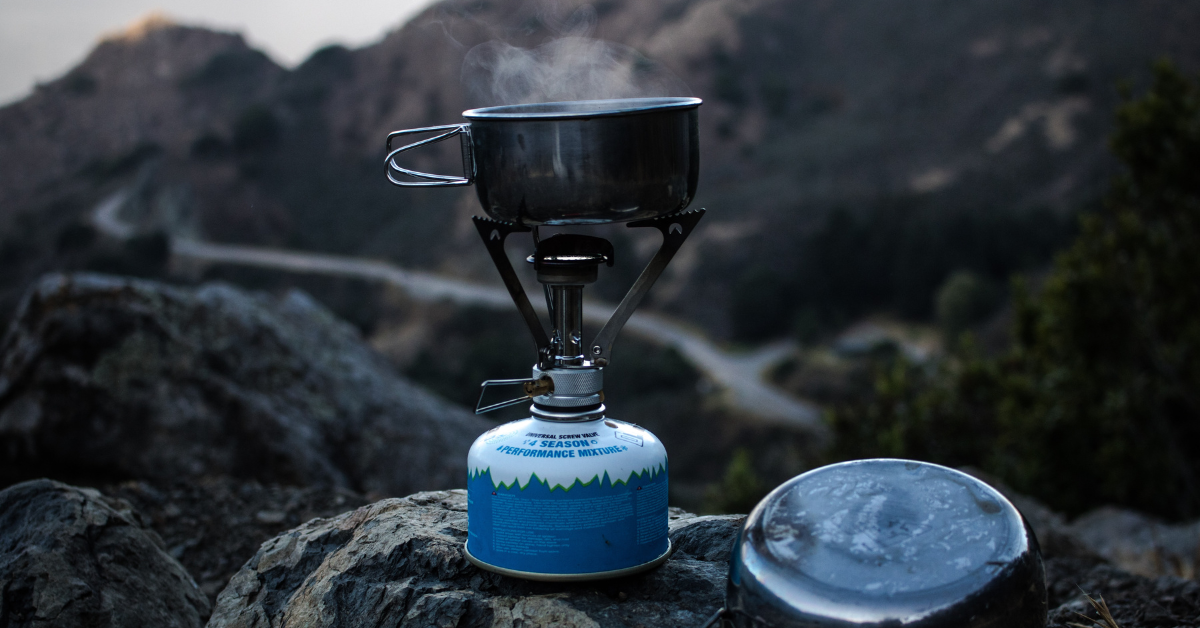Camping is a great way to escape the hustle and bustle of daily life and connect with nature. Whether you’re a seasoned camper or just starting out, one thing is for sure: you’ll need a reliable source of heat and cooking power. That’s where camping gas comes in! Lightweight, easy to transport, and dependable, camping gas is the perfect fuel source for outdoor enthusiasts.
But with great convenience comes great responsibility. Camping gas canisters are flammable and must be stored safely in your home. If not properly stored, they can pose a fire hazard or even explode. So, where do you store camping gas in your home?
To help you keep your home safe, we’ve put together a comprehensive guide on the best places to store camping gas and tips to ensure its safe storage.
Factors to Consider When Choosing a Storage Location
When choosing a storage location for your camping gas, there are several factors to consider, including accessibility, safety, and ventilation. Here’s what you need to know:
1. Accessibility
You’ll want to choose a storage location that is easily accessible so that you can quickly grab your camping gas when you’re ready to hit the road. However, you should also make sure that the storage location is out of reach of children and pets.
2. Safety
Camping gas is flammable and must be stored away from heat sources and open flames. Avoid storing it in areas near your stove, fireplace, or any other heat source in your home.
3. Ventilation
Proper ventilation is important when storing camping gas. The canisters should not be stored in a sealed container, as this can cause pressure to build up and increase the risk of an explosion.
Related: Can You Store a Tent in a Shed?
6 Recommended Storage Options for Camping Gas in Your Home
When it comes to storing camping gas in your home, there are several options to choose from, each with its own pros and cons. Here are three of the most popular:
1. Dedicated Storage Cabinets or Shelves
If you have space in your garage or basement, consider investing in a dedicated storage cabinet or shelving unit specifically designed for camping gas canisters. These units often come with ventilation ports to ensure proper airflow and are made of fire-resistant materials for added safety. They are also typically lockable, which can help prevent children and pets from accessing the canisters.
2. A Garage or Shed
If you don’t have space inside your home, your garage or shed may be a suitable storage location for your camping gas. Just make sure that the area is well-ventilated and away from any heat sources.
Consider installing a storage cabinet or shelving unit in your garage or shed to keep the canisters organized and easily accessible.
3. Outdoor Storage Containers
For those who prefer to keep their camping gas outside, an outdoor storage container may be the perfect solution. These containers come in a variety of sizes and are designed to keep your camping gas safe and secure from the elements. They are typically made of weather-resistant materials and are lockable for added security.
Some models even come with wheels for easy mobility. Just make sure that your outdoor storage container is located away from any heat sources or sources of ignition.
4. Storage Racks
If you have limited space and want to maximize your storage, consider using a storage rack. These racks are designed to hold multiple canisters vertically and can be placed on a shelf or the floor. They are compact and efficient, making them a great option for those with limited space.
5. Storage Boxes
Another option for camping gas storage is a storage box. These boxes are typically made of weather-resistant materials and come in a variety of sizes to fit your needs. Some storage boxes even come with wheels for easy mobility.
Storage boxes are a good choice if you want to keep your camping gas canisters protected from the elements and out of sight.
6. Closet Storage
If you have a spare closet in your home, you can use it to store your camping gas canisters. Make sure the closet is cool, dry, and well-ventilated. You can use shelving or storage bins to keep the canisters organized and easily accessible. Just make sure that the closet is away from any heat sources or sources of ignition.
No matter the storage option you choose, it’s important to regularly inspect your camping gas canisters and your storage location to ensure they are in good condition and free of leaks or other potential safety hazards. This brings me to the next section of this detailed guide.
Safety Tips to Observe While Storing Camping Gas in Your Home

Storing camping gas canisters requires a bit of caution and care to ensure the safety of you and your home. Here are some important safety tips to keep in mind:
1. Proper Labeling
It’s essential to label your camping gas canisters clearly and accurately. This will help you identify them quickly and prevent any confusion, especially if you have multiple canisters. Label each canister with the type of fuel it contains, the manufacturer, and the expiration date (if applicable).
2. Regularly Check Seals
Regularly inspect the seals on your camping gas canisters to ensure they are tight and free of leaks. Check the seals before and after each use, and replace the canister if you notice any cracks or leaks. Leaking gas can pose a fire hazard and is also a waste of valuable fuel.
3. Avoid Storing Near Open Flames or Heat Sources
Camping gas is flammable and must be stored away from heat sources and open flames. Store your camping gas in a cool, dry place, such as a garage or basement, to reduce the risk of fire. Do not store camping gas near your stove, fireplace, or any other heat source in your home.
4. Keep Canisters Upright
Store your camping gas canisters in an upright position to reduce the risk of leakage. Make sure the nozzle is facing up and the valve is closed. Keeping the canisters upright will also make them easier to grab and transport when you’re ready to hit the road.
5. Inspect Canisters Regularly
Regularly inspect your camping gas canisters for any signs of damage or wear and tear. If you notice any dents, rust, or other damage, dispose of the canister properly. Damaged canisters can pose a safety hazard and are not safe to use.
6. Dispose of Used Canisters Properly
When a camping gas canister is empty, it should be disposed of properly. Do not reuse, refill, or puncture the canister. Contact your local waste management company for information on how to dispose of empty camping gas canisters in your area.
So, Where is the best place to store camping gas at home?
The best places to store camping gas include a dedicated storage cabinet, a garage or shed, an outdoor storage container, a storage rack, a storage box, or a closet. Whichever option you choose, make sure to follow all safety guidelines and regulations to ensure the safe and secure storage of your camping gas.
Conclusion – Where Do You Store Camping Gas In Your Home?
Camping gas is a convenient and practical source of fuel for outdoor enthusiasts, providing a dependable source of heat and cooking power when you’re miles away from civilization. But with great convenience comes great responsibility. Proper storage is essential to ensure the safety of you and your home.
By following the guidelines and tips I’ve outlined in this blog post, you’ll be well on your way to choosing the best storage location for your camping gas and ensuring its safe storage. So pack your bags, grab your camping gas, and hit the road for an adventure of a lifetime!
